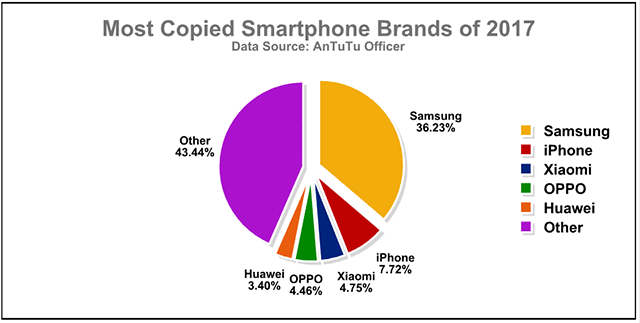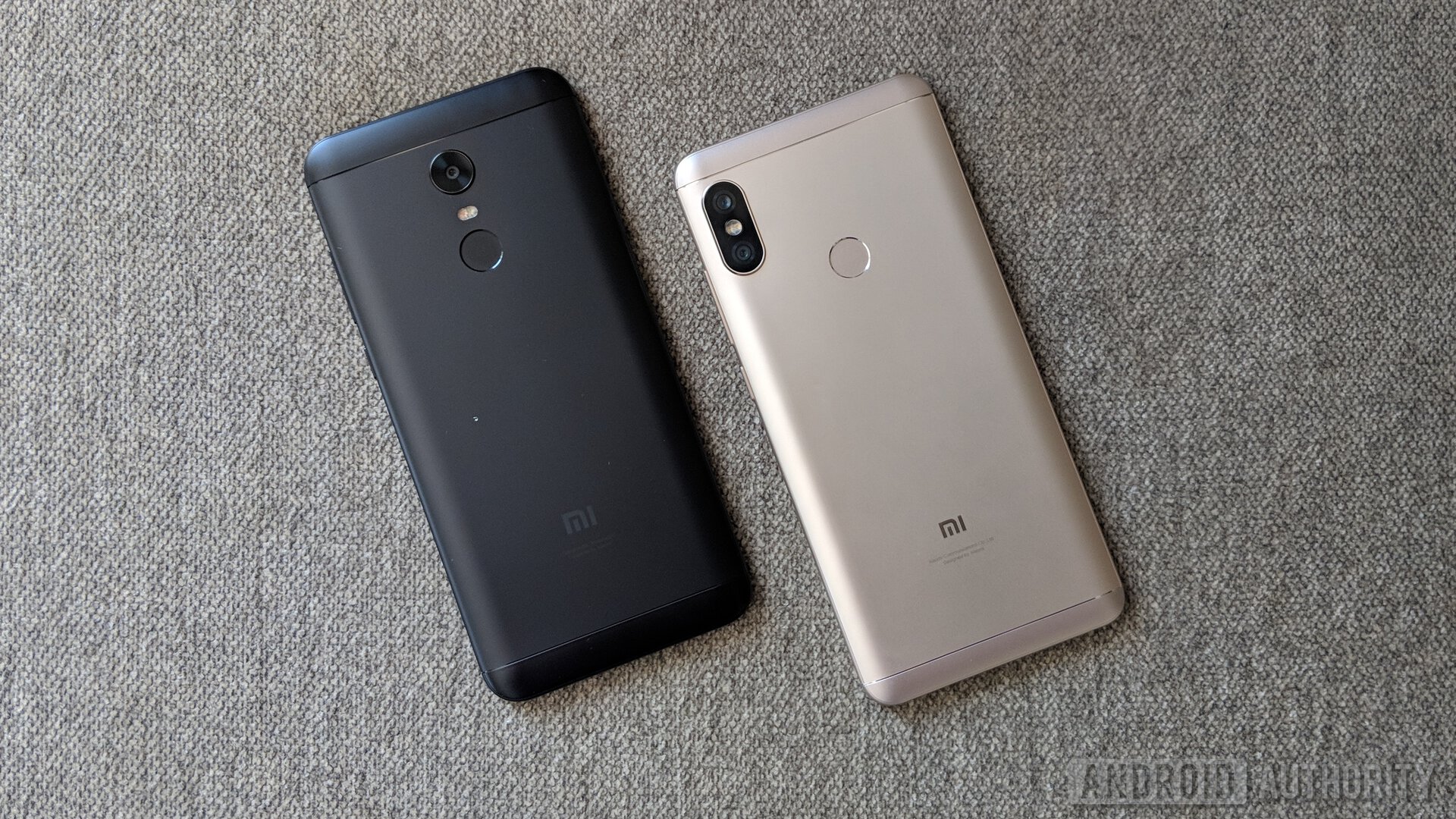How to spot a fake phone

Spend enough time on the internet and you’re bound to come across a horror story or two of some unfortunate soul duped into spending hundreds of dollars on a counterfeit or fake phone. It may look like a brand new Samsung Galaxy S9 from the outside, but it’s not even close on the inside, with a cheap camera, outdated processor, and other cheaper components instead of the real thing.
Counterfeiting Samsung’s high-end products is big business in China. According to AnTuTu’s 2017 knock-off smartphone report, Samsung smartphones accounted for over 36 percent of the counterfeit market last year, significantly outpacing the iPhone’s 7.7 percent and Huawei’s meager 3.4 percent. The European Galaxy S7 Edge was by far the most faked phone on the list. The company’s 2017 report found 2.64 percent of the 17,424,726 verified phones that ran its benchmarks were knock-offs. That’s 460,000 confirmed fakes out there just based on this single sample. Given there are more than a billion smartphones on the market, that extrapolates to many millions of knockoffs.
Buying a new phone from a reputable retailer is your safest bet, but that’s not always possible. The growing market for second hand, refurbished, and cheaper import phones is a hotbed of potential shady products and knock-offs. If you want to avoid wasting your cash on a fake phone, here’s our easy guide to help check that your new phone is authentic.
Symptoms to watch for: Shoddy exterior
The most obvious place to detect a fake phone is the exterior design; buttons in the wrong place, bezels that don’t look quite right, or a camera housing that isn’t flush when it should be. Unfortunately, well-executed dodgy devices aren’t so easy to detect from the outside, they only become obvious once you start using them.
If you’re dealing with a private seller, the first port of call is to make sure the device actually turns on. Even if you’re not there in person, the seller should be able to provide images with the screen on, and probably even send you a short video or GIF of them flicking through the UI. Never be afraid to ask for a closer look at the screen, even if it’s just for cracks and scratches.
Knockoff software is usually a dead give away, particularly if the UI or app icons don’t match the official device theme. You can get to know a new device just by watching some YouTube videos of reviews. Keep an eye out for strange looking launchers and icons, missing features or menus, or non-standard pre-installed apps.

Redskull To the untrained eye, it’s not easy to spot this fake Galaxy S9 at a casual glance. It’s the one on the right by the way.
Performance is equally important here, and it’s the main point that victims notice after purchase. Counterfeit handsets often include cheaper processors, which stutter and lag their way through daily use. Some apps and toggles probably won’t even run because the operating system is only skin deep, so be sure to have a good dig through the OS and a few apps to make sure everything works correctly. If you can’t do so in person, you can always ask for video evidence. This is generally good advice for buying used or refurbished phones anyway — it’s helpful for detecting if aging handsets have any battery or processor problems.
As always, be sure to follow general buying rules for used products too. Don’t agree to pay outside of official platforms where you won’t be protected, meet in mutually agreeable locations, and avoid requests to bring cash on a first meet. Pushy unofficial sellers who won’t answer detailed questions are, as always, a major warning sign too.
If a deal sounds too good to be true, it probably is.
Testing the phone out
While it’s not always possible, we highly advise checking out second hand and refurbished phones in person before handing over big sums of money. This way you can not only double check the physical condition of the handset but also run a few simple tests to make sure it’s not a fake phone on the inside either.
Check that the hardware matches up
A fake phone will scrimp out on cheaper hardware alternatives to make a profit. The most common scams involve using poor quality cameras, omitting NFC or fingerprint components, and even running homebrew software on cheaper processors. Fortunately, it’s very easy to find official spec sheets from handset manufacturers online to double check against the phone in your hands.
Display resolution, UI themes, and processing hardware are the best ways to check for counterfeit hardware.
First, make sure all the hardware works. Toggle Wi-Fi, Bluetooth, GPS, NFC, and any other features on and off. Maybe even connect to another device or network. Checking the fingerprint scanner options are actually in the security settings menu isn’t a bad idea either, even if the seller isn’t keen on you locking the phone with your print before buying.
Don’t forget to test out the cameras either. Make sure both the front and back cameras work and have all the features promised with the device, like a wide angle lens or telephoto zoom. A fake camera app’s features and layout are always different from official software. Finally, take a picture and check the megapixel count. You can do this by pressing the info button in the default gallery app or Google Photos. A clearly inferior camera module will be pretty easy to spot based on the photos it takes, even as viewed on the phone.
Run CPU-Z
As we’ve mentioned, a counterfeit processor is a major red flag and will ruin your experience with your new phone, so it’s definitely worth comparing the chip in the phone against the official spec sheet.
You don’t need to take the phone apart to do this, you just need to quickly install CPU-Z from the Play Store. CPU-Z will give you a rundown of the key processing and low-level software components running inside the phone, which makes it virtually impossible to spoof.

Once installed, you can check out details about the CPU and GPU hardware on the opening page. If you’re not really into that technical stuff, the Device tab will give you the name of the processor chip under Hardware, which you can simply check against the spec sheet. You’ll also find the amount of RAM and the phone’s display resolution listed on this page, which again will instantly flag up any knock-offs. You can also install AIDA64 to cross-reference some details.
Compare the IMEI number
All of the above will help you spot a cheap fake phone, but it won’t help against stolen or blacklisted products. To do this, you’ll want to check out the International Mobile Equipment Identification number (IMEI) against the claims made by your seller.
Each phone’s cellular modem is given a unique 15 digit IMEI number. It’s registered against the phone’s make and model number, used to register and lock devices to specific networks, and can also be blacklisted to block phones or SIMs if they’re stolen.
A phone’s IMEI can tell you the model associated with it, network compatibility, and if the handset has been stolen.
You can find a phone’s IMEI number in the About Phone section of the Android Settings menu. Alternatively, simply type *#06# into the phone’s dialer and a box will pop up with the number. The IMEI is also included on the phone’s box, making it a cinch to double-check if your prospective purchase comes in its original packaging. Alternatively, popping the number into the imei.info website will give you a breakdown of the handset’s status.
The IMEI number is also very helpful for checking if the phone is locked to a specific network. If you’re promised an unlocked phone, you certainly won’t want to find out it’s locked when you pop your SIM in. Sometimes sellers simply don’t check this information, others use the allure of an unlocked phone to bring in unsuspecting customers.
Been scammed? What now?
It’s not always possible to check all this with online sellers, but if you end up with a dud handset it’s not the end of the road. Legal protections will vary depending on your country of residence and chasing up fraudulent sellers is often a lost cause, but your method of payment can offer a level of protection.
Cash is best avoided, both due to the lack of a paper trail and inability to recover payment, even if you did get a receipt. Credit cards are better than debit, cash cards, or bank transfers in this regard too, as your bank can usually dispute a transaction to obtain a chargeback. Always check your specific bank’s terms and conditions. When buying online, PayPal offers inclusive buyer protection specifically covering knock-off goods and used products. Be sure to obtain proof of purchase and a detailed description of the item from the seller to act as evidence, just in case. It’s also a good idea to familiarize yourself with the seller’s reputation online via reviews and forum posts before committing to a purchase. A quick Google ahead of time might save you lots of agony after the fact.
With all of the above in mind, you should be well prepared and protected against ending up with a fake phone. Chances of encountering one are slim, but it’s always best to be prepared. If you have any of your own tips or experiences to share, be sure to leave a comment below.
Source: Android Zone
The post How to spot a fake phone appeared first on TuneMaster.ml.




Comments
Post a Comment